Why This Cucumber Beet Salad is My Go-To Healthy Side
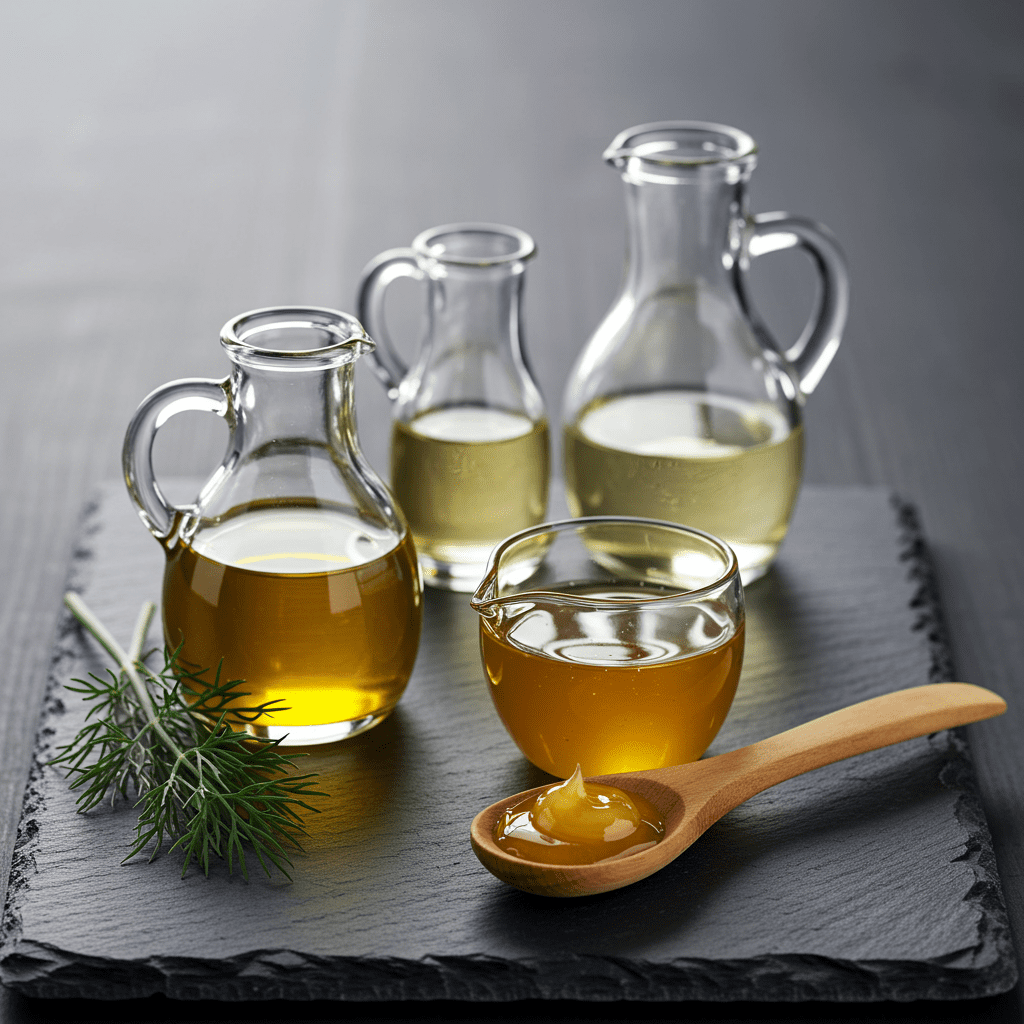
Are you tired of the same old lettuce-based salads? I get it.
Sometimes you want something with more texture, more flavor, and more substance. That’s where this incredible Cucumber Beet Salad with Feta comes in.
As a registered dietitian, I’m constantly searching for recipes that are not only packed with nutrients but also genuinely exciting to eat. This salad is a winner on all fronts.
It balances the earthy sweetness of beets with the cool crunch of cucumber and the salty, creamy bite of feta cheese, all tied together with a simple yet brilliant vinaigrette. It’s the kind of side dish that steals the show and makes you feel fantastic, similar to how a spicy chicken noodle soup can be a secret wellness weapon.
- What Makes This Beet and Cucumber Salad So Special?
- Are Beets Really That Good For You?
- Fresh, Canned, or Pre-Cooked Beets: Which Is Best?
- The Easiest Way to Roast Fresh Beets
- The Supporting Stars: Cucumber and Feta
- How to Whisk Up the Perfect Tangy Dressing
- Putting It All Together: A Step-by-Step Guide
- How to Customize Your Beet Salad
- Can I Make This Salad Ahead of Time?
- What to Serve With Your Beet Salad to Make It a Meal
- Conclusion
What Makes This Beet and Cucumber Salad So Special?
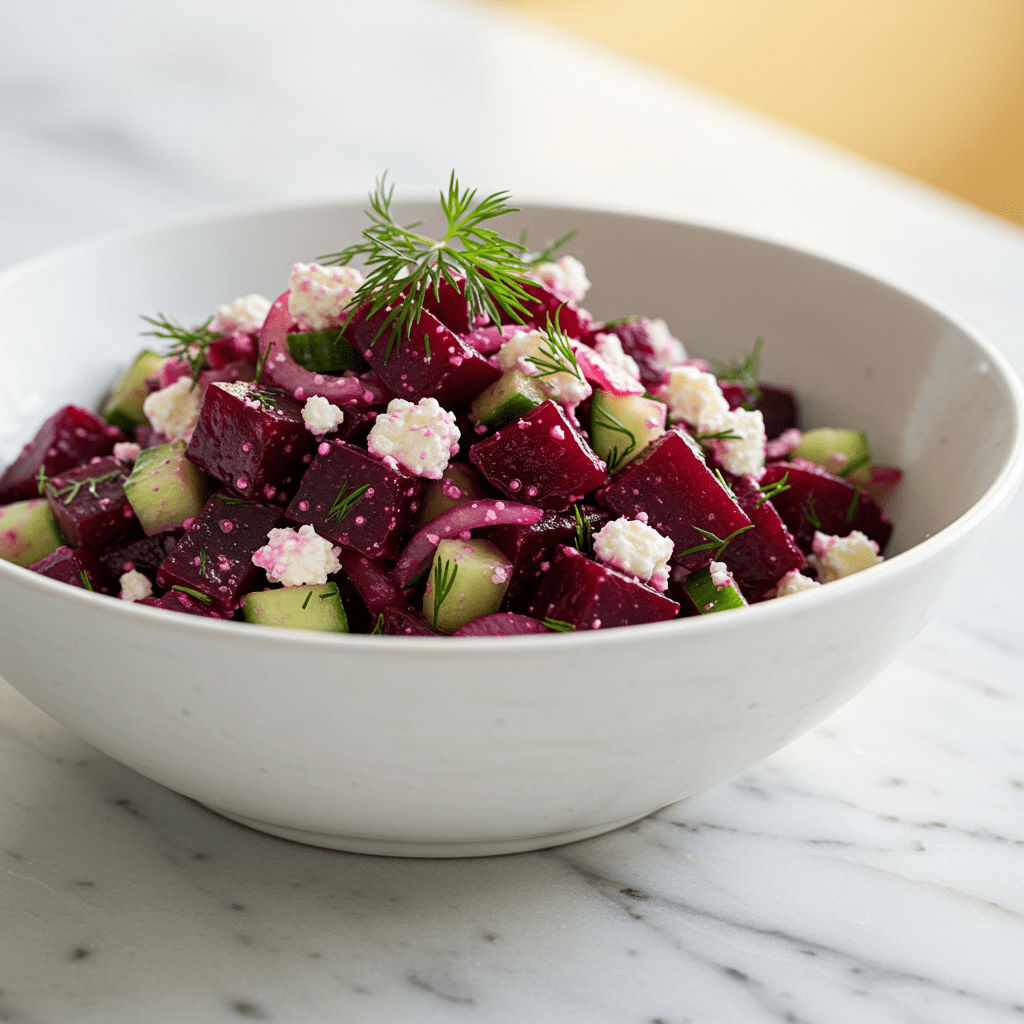
This salad is a masterclass in flavor and texture synergy. It’s not just about mixing ingredients; it’s about how they elevate each other.
The deep, almost sweet earthiness of the beets provides a rich foundation. Then, the crisp, hydrating cucumber cuts through that richness with a burst of freshness.
The feta cheese introduces a creamy texture and a vital salty, tangy element that makes the beets’ sweetness pop. Finally, a sharp, acidic vinaigrette ties everything together, brightening all the flavors and creating a truly complete and satisfying bite.
It’s a combination that feels both rustic and elegant, making it perfect for a weeknight dinner or a special occasion.
Are Beets Really That Good For You?
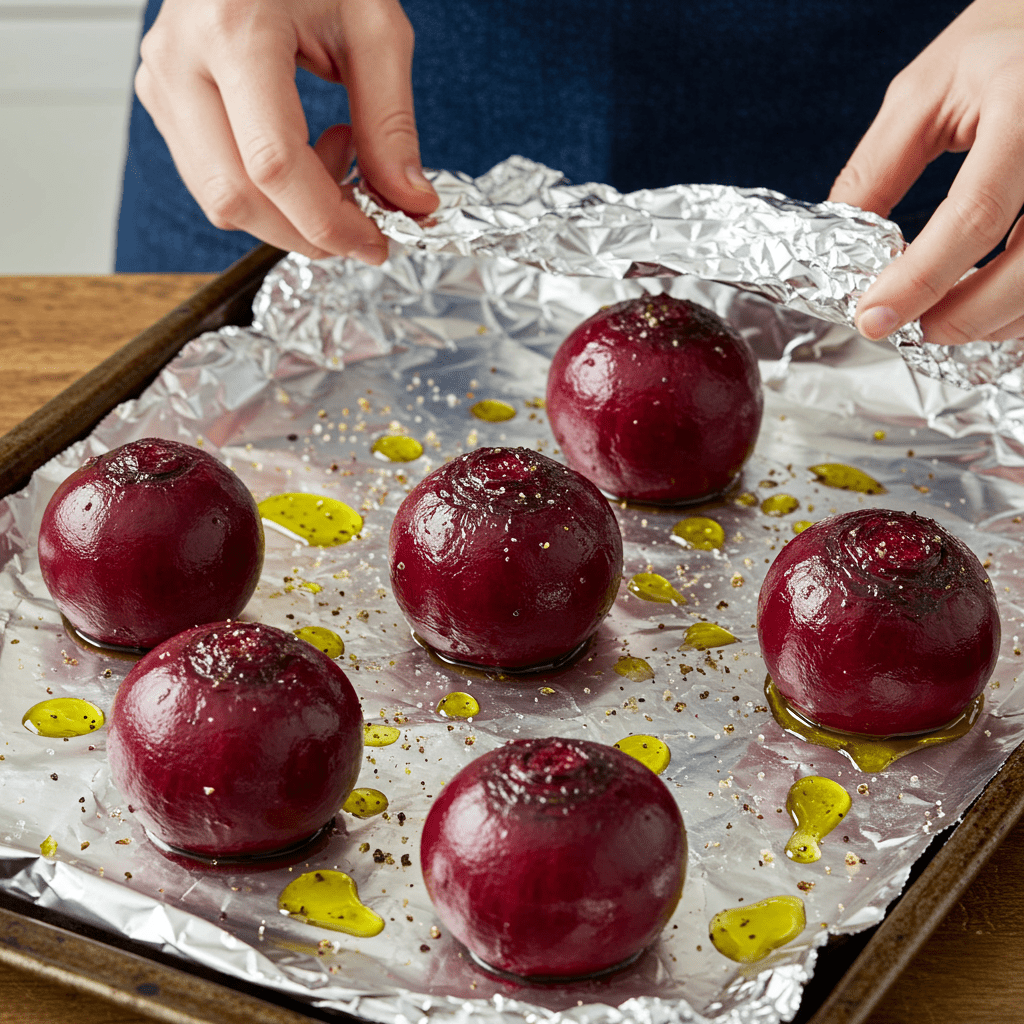
As a dietitian, I’m thrilled when a food that tastes this good is also a nutritional powerhouse. Beets are a fantastic source of essential nutrients, including folate, manganese, and potassium.
But their real claim to fame comes from two key compounds: nitrates and betalains. First, let’s talk about nitrates.
Your body converts the dietary nitrates in beets into nitric oxide, a molecule that helps relax and dilate blood vessels. According to the Harvard T.H. Chan School of Public Health, this process can contribute to lower blood pressure and improved cardiovascular health. Some studies have even shown that beet juice can enhance stamina and athletic performance for this very reason.
Second, that gorgeous red color isn’t just for looks. It comes from antioxidants called betalains.
The Cleveland Clinic notes that betalains have potent anti-inflammatory properties, which are crucial for fighting chronic disease. So, every colorful bite is also helping to protect your cells from damage.
Fresh, Canned, or Pre-Cooked Beets: Which Is Best?
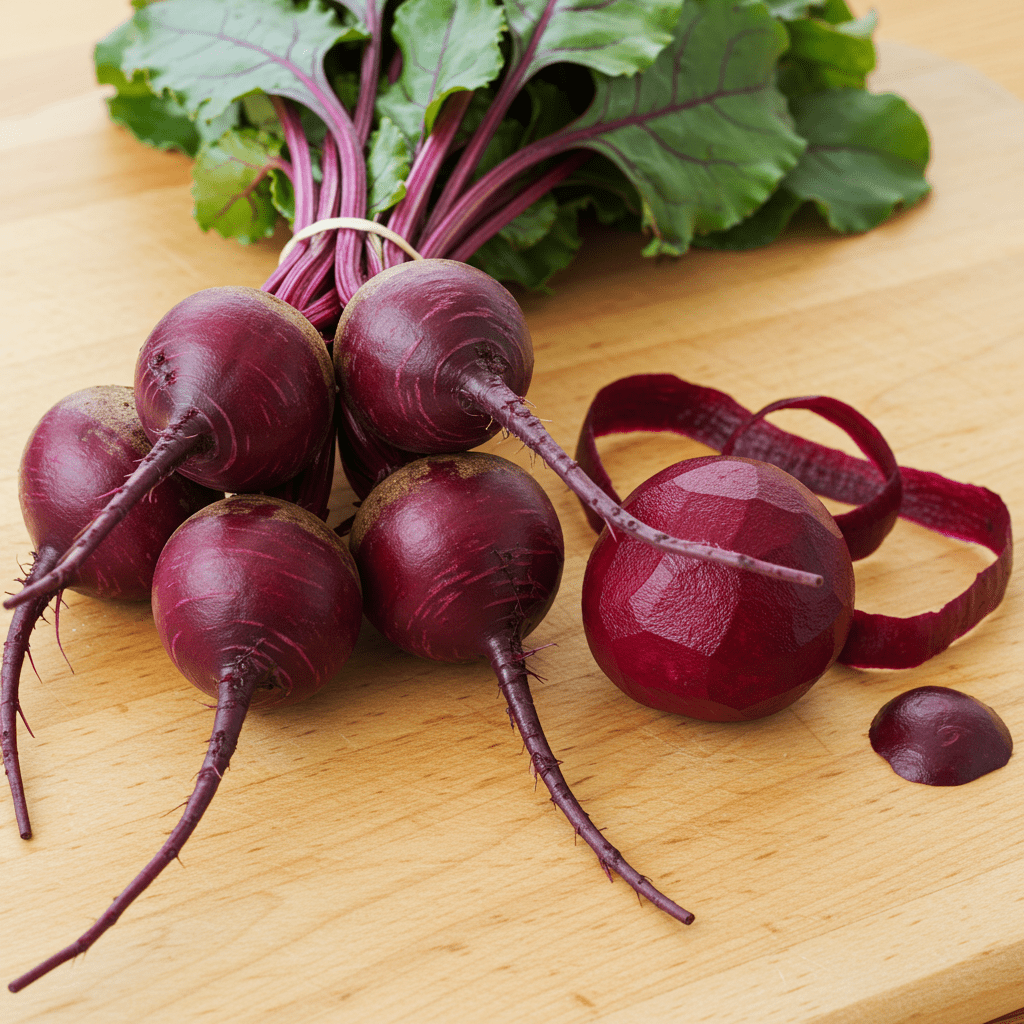
The type of beets you choose will influence the prep time and final taste of your salad. There’s no wrong answer, but here’s my breakdown to help you decide:
- Fresh Beets: These offer the best flavor and texture, period. Roasting them yourself caramelizes their natural sugars, resulting in a deeper, sweeter taste. Look for small to medium-sized beets that feel firm and heavy for their size, with smooth skin. If the greens are attached, they should look fresh, not wilted.
- Pre-cooked, Vacuum-Sealed Beets: This is my favorite shortcut! You can often find these in the produce section of your grocery store. They are already peeled and cooked, ready to be sliced and tossed into your salad. They save a ton of time and mess while still offering great flavor. Just be sure to buy the plain ones, not the ones already marinated in vinegar.
- Canned or Jarred Beets: These are the most convenient option. They are ready to go right out of the can. However, they can sometimes have a softer texture and a slightly ‘canned’ taste. If you go this route, rinse them well and look for varieties packed in water, not syrup or pickling brine, to control the sugar and sodium content yourself.
The Easiest Way to Roast Fresh Beets
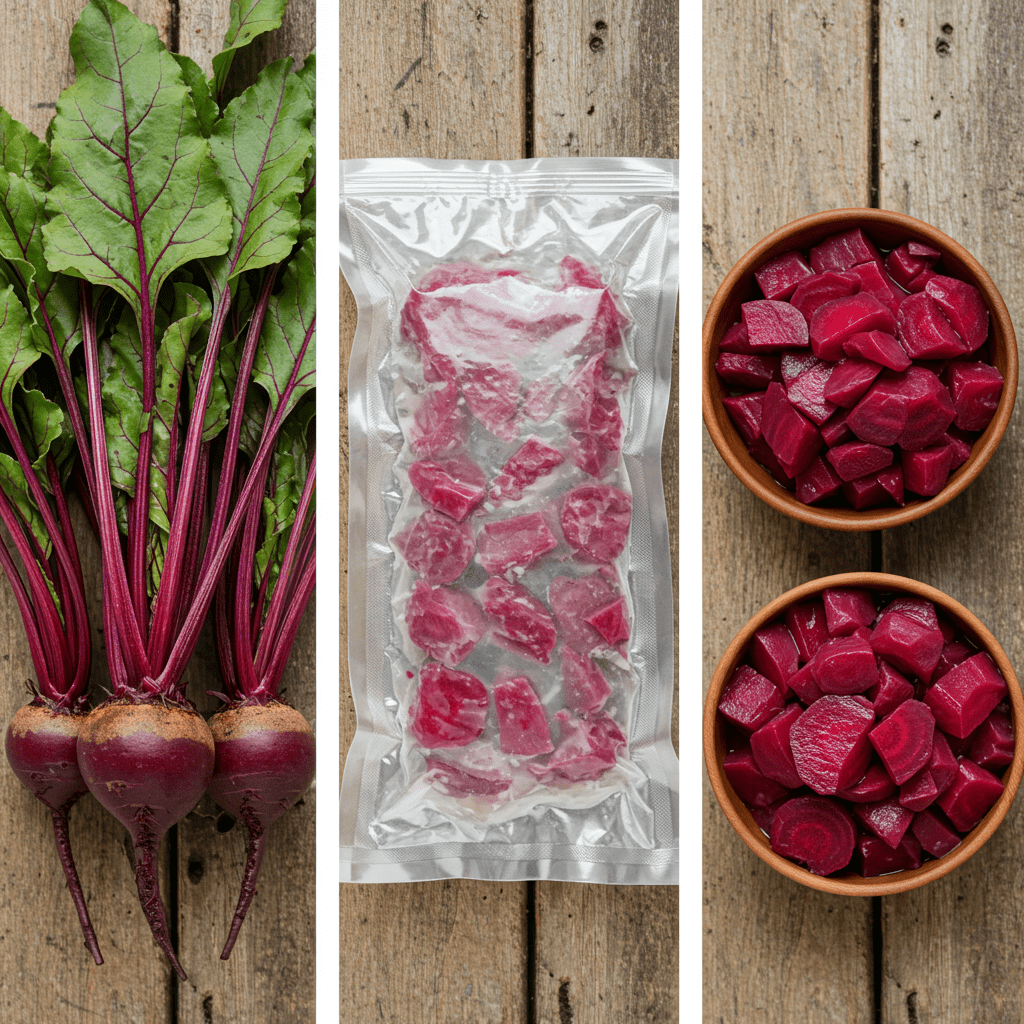
If you have the time, roasting your own beets is a simple process that pays off in flavor. Don’t be intimidated; it’s mostly hands-off time.
- Prep: Preheat your oven to 400°F (200°C). Scrub your beets thoroughly and trim off the leafy tops and the root tail.
- Wrap: Drizzle the beets with a little olive oil and sprinkle with salt and pepper. Wrap each beet individually in aluminum foil. This steams the inside while the outside roasts, making them tender and easy to peel.
- Roast: Place the foil-wrapped beets directly on the oven rack. Roast for 45-60 minutes. The exact time will depend on their size. They’re done when you can easily pierce them with a fork.
- Peel: Once they’re cool enough to handle, the skins should slide right off with your fingers or a paper towel. From there, they’re ready to be chopped for your salad.
The Supporting Stars: Cucumber and Feta

The other ingredients in this salad are just as important for creating a balanced dish. Cucumbers are over 95% water, providing a refreshing, hydrating crunch that prevents the salad from feeling too heavy.
I prefer using English or Persian cucumbers because their skin is thin and they have fewer seeds, meaning no peeling or de-seeding is required. According to data from the USDA, cucumbers also provide a bit of Vitamin K, an important nutrient for bone health.
Feta cheese is the perfect savory counterpoint. Made traditionally from sheep’s milk, its distinct salty and tangy flavor profile cuts through the sweetness of the beets.
Its crumbly yet creamy texture adds another layer of sensory experience. If you’re not a fan of feta, goat cheese is an excellent alternative, offering a similar tang with a creamier consistency.
How to Whisk Up the Perfect Tangy Dressing
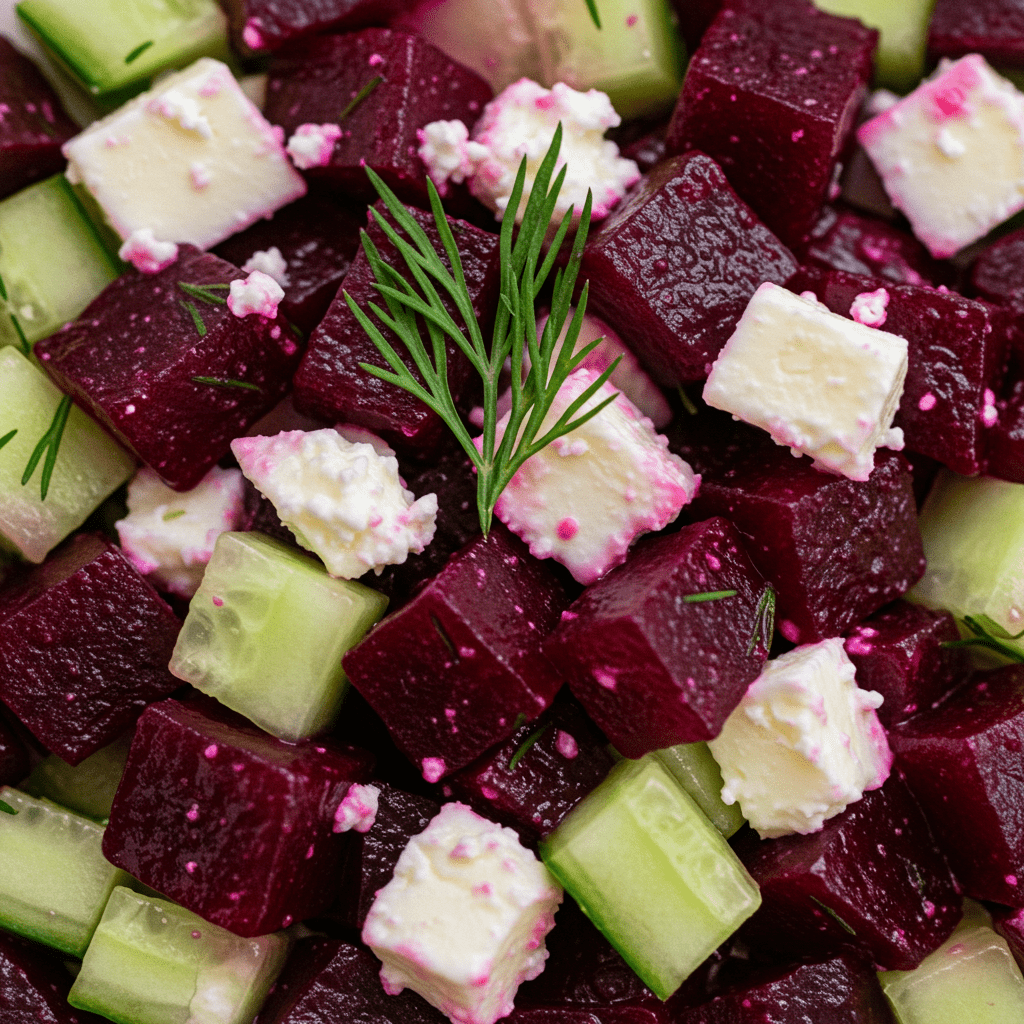
A great salad deserves a great dressing, and this one couldn’t be simpler. It follows the classic vinaigrette ratio, which is easy to remember and adapt.
- The Acid (White Wine Vinegar): This provides the bright, tangy kick. White wine vinegar is crisp and light, but you could easily swap it for red wine vinegar, apple cider vinegar, or even fresh lemon juice for a different kind of zest.
- The Fat (Extra Virgin Olive Oil): Use a good quality olive oil here, as its flavor will really shine through. It balances the acidity and gives the dressing body, helping it cling to the vegetables.
- The Sweetener (Honey or Maple Syrup): Just a touch of sweetness is needed to round out the flavors and complement the natural sugars in the beets. Maple syrup is a great vegan alternative.
- The Seasoning (Salt and Pepper): These are non-negotiable! Salt enhances all the other flavors, while black pepper adds a tiny bit of spice.
To make it, simply whisk everything together in a small bowl or shake it up in a jar with a tight-fitting lid. Always taste and adjust before dressing your salad.
Putting It All Together: A Step-by-Step Guide

Ready to see it all come together? Here’s how you assemble this beautiful salad.
- Prepare Your Vegetables: If you haven’t already, chop your cooked beets and cucumbers into uniform, bite-sized pieces. Thinly slice your red onion. A mandoline can be great for getting super-thin onion slices if you have one.
- Make the Dressing: In a small bowl or jar, whisk together the white wine vinegar, olive oil, and honey. Season with a pinch of salt and freshly ground black pepper. Taste it—does it need more salt? A little more sweetness? Adjust it to your liking now.
- Combine Gently: In a large serving bowl, add your chopped beets, cucumbers, and red onion. Pour about half of the dressing over the top and toss very gently. Beets will bleed their color, so don’t over-mix if you want to keep the cucumbers and feta from turning bright pink right away.
- Add Feta and Serve: Just before serving, add the crumbled feta cheese and any fresh herbs you’re using, like dill or parsley. Give it one last gentle toss, drizzle with the remaining dressing if needed, and serve immediately.
How to Customize Your Beet Salad

One of the best things about a simple salad like this is how easy it is to adapt. Think of this recipe as a template for your own creations.
Here are a few of my favorite ways to change it up:
- For More Crunch: Toasted walnuts, pistachios, or sunflower seeds are fantastic additions. Add them right before serving to keep them crunchy.
- For a Protein Boost: To turn this from a side into a light main course, add a can of rinsed chickpeas, some cooked quinoa, or grilled chicken or salmon.
- For a Different Flavor Profile: Swap the feta for creamy goat cheese or tangy blue cheese. Use fresh mint or basil instead of dill for a different herbaceous note. A splash of balsamic glaze at the end can add a rich, syrupy sweetness.
- For More Veggies: Feel free to add other ingredients you have on hand. Halved cherry tomatoes, chopped bell peppers, or peppery arugula would all be delicious.
Can I Make This Salad Ahead of Time?
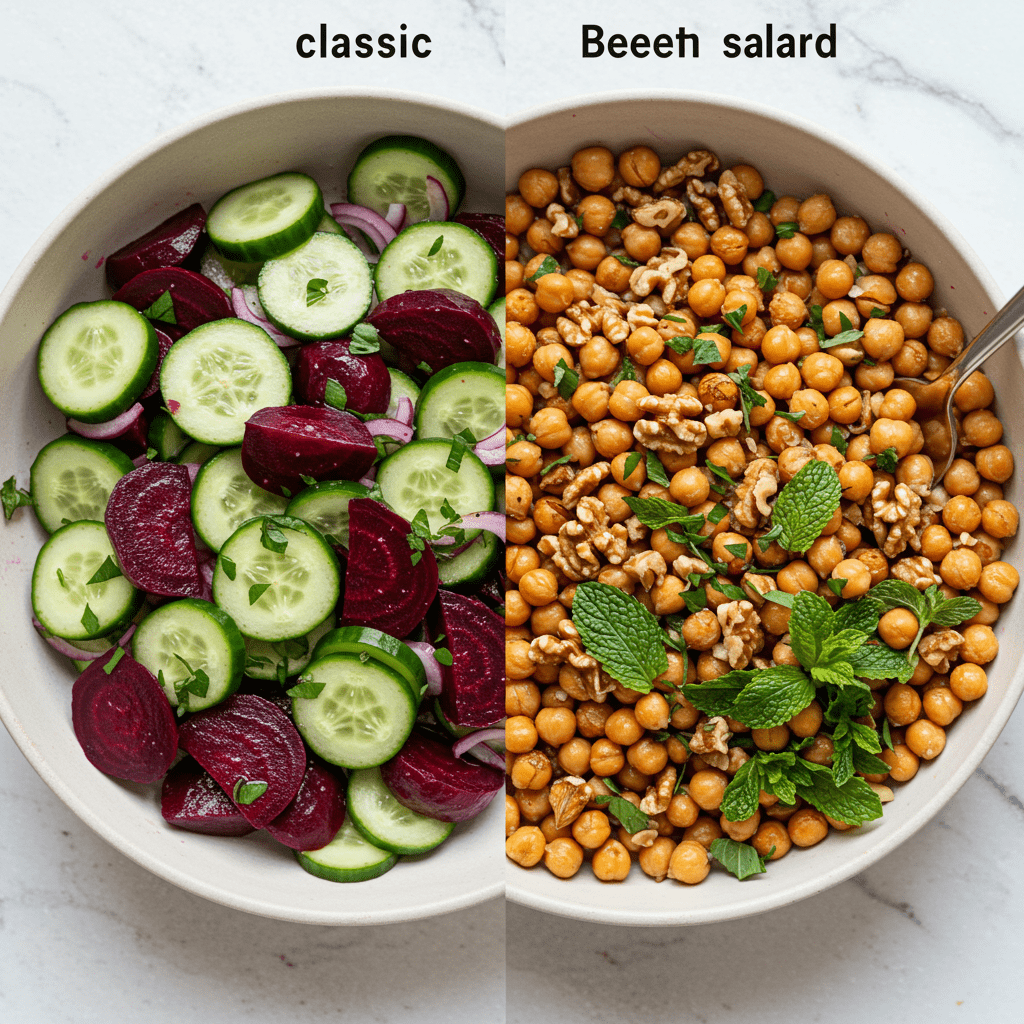
Yes, you absolutely can, which makes it great for meal prep or entertaining. However, for the best texture, a little strategy is required. If you mix everything together, the cucumbers will lose their crispness and the whole salad will turn bright pink overnight.
Here’s the best method I’ve found:
- Store Separately: Keep your chopped beets, cucumbers, and onion in one airtight container in the fridge. In a separate small jar, mix your dressing. Keep the feta cheese in its own container.
- Combine Before Serving: When you’re ready to eat, simply combine the vegetables, toss with the dressing, and top with the feta cheese. This way, everything stays fresh and crisp for up to 3-4 days.
If you don’t mind a softer texture, you can store the fully assembled salad in an airtight container for up to 2 days. It will still taste delicious, but the crunch will be gone.
What to Serve With Your Beet Salad to Make It a Meal
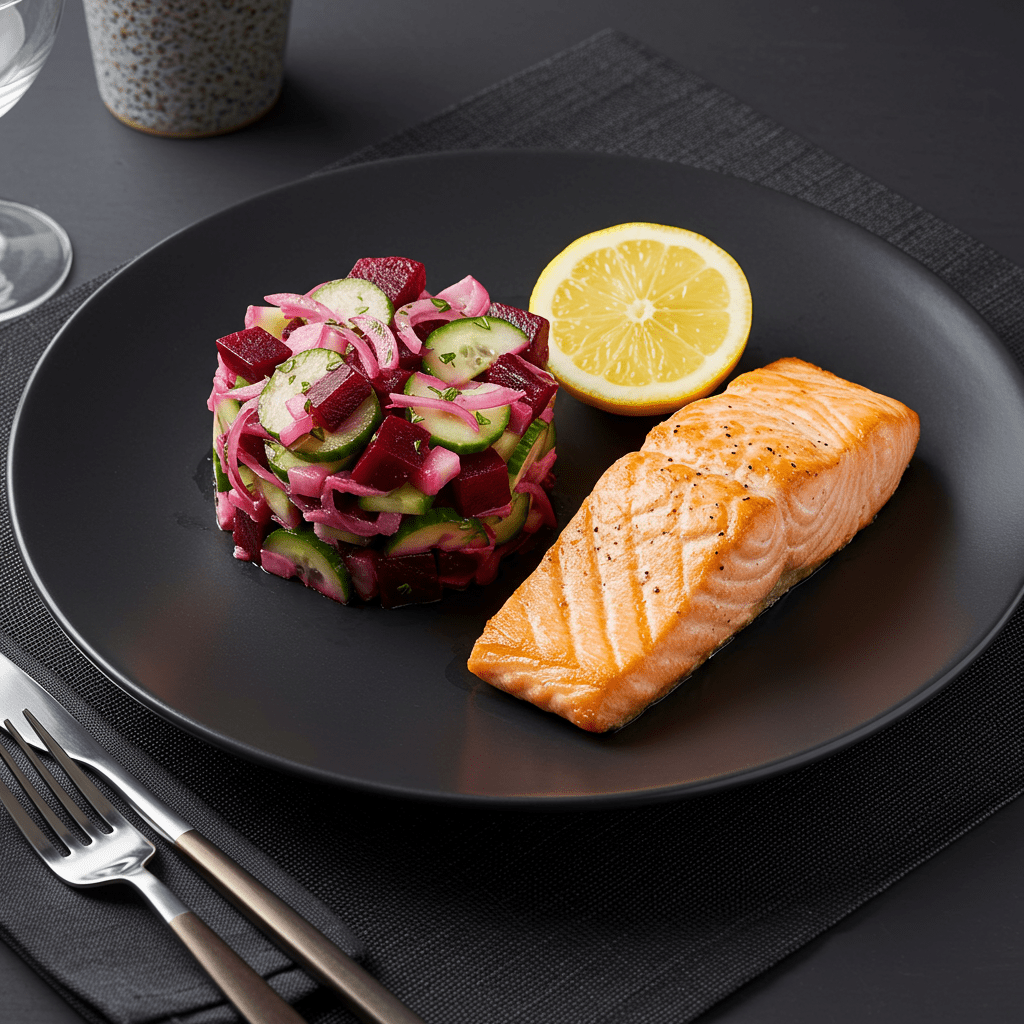
While this salad is a fantastic side dish on its own, it pairs beautifully with a wide variety of main courses, making for a complete and balanced meal.
- With Grilled Meats: The salad’s bright, tangy flavor is a perfect complement to the smoky char of grilled chicken, steak, or pork chops.
- With Fish: Serve it alongside a simple piece of baked or pan-seared salmon or cod. The fresh flavors of the salad cut through the richness of the fish wonderfully.
- For a Vegetarian Meal: Pair it with a hearty lentil soup, a quinoa-stuffed bell pepper, or simply serve it with a side of warm, crusty bread and hummus for a satisfying lunch.
- At a Barbecue: This salad is a welcome, refreshing addition to any cookout spread, standing out amongst heavier potato salads and coleslaws.
Conclusion
This Cucumber Beet Salad is more than just a recipe; it’s a perfect example of how delicious and satisfying healthy eating can be. By combining the earthy sweetness of beets with the crispness of cucumbers and the salty tang of feta, you get a dish that delights the senses and nourishes the body.
As a dietitian, I encourage you to experiment with the variations and make this salad your own. It’s a versatile, nutrient-dense side that proves you never have to choose between flavor and your health goals, much like another dietitian-favorite summer meal.

[…] the fiber and vitamin content, making it a more nutrient-dense choice. Much like our popular cucumber beet salad, it’s a wonderfully nutrient-dense […]
[…] same old steamed veggies or a simple green salad, but there are so many other options, like a zesty cucumber beet salad or this vibrant […]